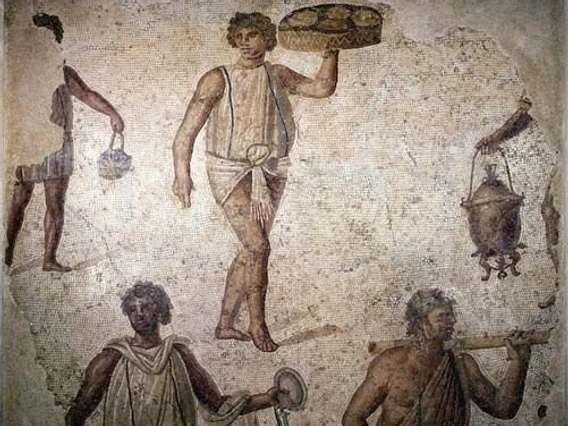
Tomb carving of a Roman carpentum, the kind of carriage used in my novels
As I noted in a previous post, the Romans either built or substantially upgraded roads between the major cities of Asia Minor from the second century BCE onward. Thus people who had the time and money to travel could do so.
But who actually did it? For the subsistence farmers who lived on small plots of land in the countryside, travel would have been limited primarily to ferrying goods to market in the nearby city. The urban elites had more leisure time for traveling, but their lives were centered on the affairs of their city and their nearby farms, so most of them had little reason to travel beyond their immediate vicinity. The time and stress that were required to reach a distant city also served to limit their interest.
Still, there were plenty of people who plied the roads, including soldiers, government officials and their staffs, merchants, city ambassadors, people with lawsuits, cargo movers, couriers, and private messengers. Tourists and pilgrims, though less common, were also present, including people from all levels of society who journeyed to religious shrines to attend festivals or seek the aid of the gods. Medical tourism (seeking treatment at a healing center associated with a religious sanctuary) was a common resort of the wealthy when local healers proved ineffectual. The first two books in my A Slave’s Story trilogy provide a detailed account of one such journey to the sanctuary of Asklepios at Pergamon .
Travel in the Roman world was slow. A person walking at a decent pace over smooth terrain might cover 20-25 miles in a day, while an ox cart carrying a load of goods could only manage half that distance. The carriages used by wealthy travelers were not much faster, covering perhaps 30 miles in a day. They were designed to make the trip manageable, not for speed. Official mail couriers using government-provided horse relays were the speediest travelers, going as much as 40 to 60 miles in a day. (To estimate the amount of time it would take to get from one place to another in the Roman empire using different modes of travel, see the interactive map at https://orbis.stanford.edu/.)

Modern reconstruction of a Roman carriage of the type used in my novels
Within the cities, roads were constructed with great care, but constant traffic carved wheel ruts into the paving stones of the chief thoroughfares, making the ride bumpy and even dangerous if the streets were crowded. As a result, Rome prohibited private vehicles in the city until the last two hours of the day, and other cities probably followed suit. People who wanted to enter or leave the city in a carriage waited until the end of the day or else walked or took a litter to or from the city stables, as depicted in my novels.

Rutted streets from Pompeii
Driving in the countryside was less dangerous, but still uncomfortable by modern standards. Roads were built using whatever stones lay at hand, so their surfaces were rougher than those in the cities even when they were new. Maintenance could also be spotty. Passengers riding on these roads in a cart or carriage would have endured constant bumping and jarring, since ancient vehicles had little in the way of suspension systems. Even the hardiest of travelers would have been weary by the end of a long day’s drive.
For overnight stays, inns were available a day’s ride apart along the major roads, with smaller hostels between them for people who traveled more slowly. Here one could find a bed for the night (likely in a shared room), food, and drink for both people and animals. These inns had a poor reputation among more elite travelers, who regarded them as filthy havens for bedbugs, thieves, and prostitutes. They preferred to stay instead with other members of the wealthy class, who welcomed them into their homes on the basis of shared friendships or letters of recommendation from wealthy citizens in the traveler’s home city. Where such housing was unavailable, camping was also an option, as the rich generally traveled with a retinue of slaves who could set up a tent and tend to their needs overnight. Staying in an inn was probably a last resort, though there may have been some that made provision for wealthier travelers, as depicted in my novels.



